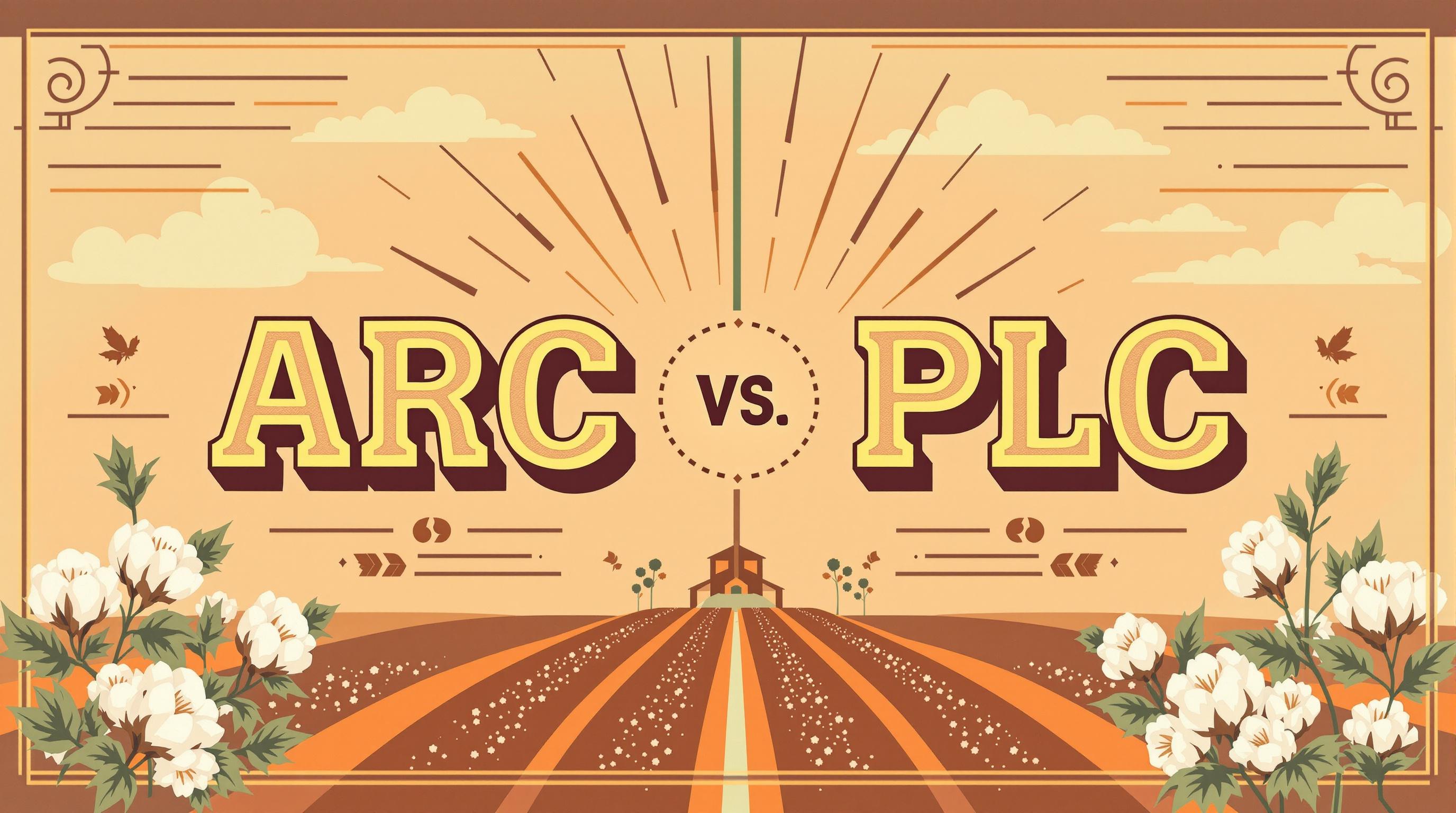Executive summary (TL;DR)
- Cost reduction in cotton farming focuses on smart input management, tech adoption, and labor efficiencies to boost profits by 15-25%, addressing pain points like high fertilizer prices with data-driven strategies.
- Key techniques include variable-rate applications, cover crop integration, and equipment maintenance, helping seasoned growers minimize waste while maintaining yields in variable conditions.
- Future trends like AI optimization and sustainable practices promise 20% more savings; start with audits and scalable tools to build long-term financial resilience.
The Hidden Costs That Eat Into Your Cotton Profits
Everything seemed to align—the weather cooperated, the bolls set heavy, and the market looked promising—but when the numbers came in, the profits were slimmer than expected. It wasn't a big catastrophe; it was the little things adding up: a bit too much fertilizer here, some unnecessary equipment repairs there, and labor inefficiencies that snuck up over months. That's when I realized cost reduction in cotton farming isn't about cutting corners—it's about sharpening them, finding those leaks in your operation and plugging them to keep more of your hard-earned money in your pocket.
In an industry where input costs can devour 60-70% of your budget per USDA ag econ reports, even small adjustments can add up to big savings—think 15-25% net profit boosts for farms that get it right. Factors like volatile fuel prices, labor shortages, and weather extremes all conspire to inflate expenses, but with targeted strategies, you can counter them without sacrificing yield or quality. For experienced growers, this means blending time-tested practices with modern innovations, drawing on field trials and data to refine your approach for maximum efficiency. We'll explore practical ways to trim the fat, from soil to harvest, helping you address common pain points like over-application or downtime that quietly erode your bottom line.
Auditing Your Operation to Identify Cost Leaks
Before you can cut costs, you need to find them—cost reduction in cotton farming begins with a thorough audit of your expenses, pinpointing areas where money slips away unnoticed, like inefficient irrigation or overlooked maintenance.
- Input Inventory Review: Track fertilizer, seed, and chemical usage against yields; apps like Granular highlight overages, often 10-15% from blanket applications—switch to variable-rate for precision savings.
- Energy and Fuel Analysis: Log tractor hours and pump usage; extensions report idle time wastes 20% fuel—GPS routing cuts passes by 10%, adding $20-30/acre back.
- Labor Efficiency Check: Time tasks like scouting or harvesting; bottlenecks add 15% overtime—reorganize crews or add simple tools to streamline, boosting output without extra hires.
Conduct annual audits with spreadsheets or software; involve your team for insights. Challenges in large operations are met by zoned tracking; small farms benefit from free USDA templates. This step reveals quick wins, setting the foundation for targeted reductions.
Optimizing Input Usage for Maximum Efficiency
Inputs like fertilizer and pesticides are prime targets—cost reduction in cotton farming through precise application can slash expenses by 20-30% per nutrient studies, without compromising boll set or fiber quality.
- Variable-Rate Technology: Use soil maps to apply N/P/K only where needed; trials show 15-25% less fertilizer in variable fields, preserving micronaire in low spots.
- Seed Rate Adjustments: Calibrate planters for 30,000-40,000/acre based on vigor; over-seeding wastes $10-20/acre—data indicates optimized rates boost stands 10%.
- Pesticide Thresholds: Scout for economic injury levels; delaying sprays until aphids hit 50/leaf saves 20% chemicals, per IPM reports, while maintaining control.
Integrate with tissue tests for real-time tweaks; annual soil sampling guides long-term. Challenges in resistance are met by rotations; organic alternatives cut synthetic costs further.
Labor Cost Control Without Sacrificing Quality
Labor eats 15-25% of budgets—cost reduction in cotton farming through smarter management can trim 10-20% while boosting productivity, addressing pain points like seasonal shortages or training gaps.
- Task Automation: Use apps for scheduling; reduce overtime 15% by optimizing crews for peaks like harvest—data shows digital tools cut admin 30%.
- Training Investments: Cross-train for multiple roles; reduces hiring 10-15%, with skilled workers handling scouting/irrigation efficiently.
- Incentive Programs: Performance bonuses for yield targets; lifts morale, cutting turnover 20%—extensions report $2,000 savings per retained worker.
Track hours with time clocks; challenges in migrant labor are met by H-2A planning. Annual reviews refine.
Equipment Maintenance to Prevent Downtime Losses
Breakdowns kill momentum—cost reduction in cotton farming via proactive maintenance can save $50-100/acre in repairs and lost time, per equipment studies, keeping your operation running smooth.
- Scheduled Inspections: Monthly checks on tractors/planters; replace filters/belts preemptively—data shows this cuts breakdowns 25%.
- Predictive Tools: Sensors like John Deere's monitor wear; alerts for issues, extending life 15-20%.
- Off-Season Overhauls: Deep clean/storage; prevents rust, saving 10% on replacements.
Budget 5% of value annually; challenges in old fleets are met by prioritization. Track via logs.
Water Conservation to Cut Irrigation Expenses
Water bills sting in dry years—cost reduction in cotton farming through efficient use can save 20-30% on pumping, per irrigation trials, while sustaining boll fill.
- Sensor-Driven Scheduling: Probes like Teralytic alert for deficits; apply only 1-1.5 inches weekly—studies show 15-25% less water without yield drop.
- Drip Systems Upgrade: Subsurface lines target roots; reduce evaporation 30% vs. floods.
- Rain Harvesting: Ponds store runoff; supplements 10-20% needs in variable rains.
Monitor with apps; challenges in saline areas are met by leaching. Annual audits optimize.
Marketing Tactics to Maximize Revenue
Selling low hurts—cost reduction in cotton farming pairs with smart marketing to lift prices 5-10 cents/lb, per market data, turning average harvests into profitable ones.
- Forward Contracting: Lock portions at peaks; hedges against drops, stabilizing cash flow 15%.
- Value-Added Products: Gin lint for premiums; sustainable certifications add 2-5 cents.
- Direct Buyer Networks: Co-ops or apps connect to mills; cut middlemen, boosting returns 10%.
Track markets daily; challenges in volatility are met by diversification. Annual plans refine.
Risk Mitigation to Avoid Costly Setbacks
Unexpected hits drain reserves—cost reduction in cotton farming through insurance and hedging can avert 20-30% losses, per risk analyses.
- Crop Insurance Layers: RP for revenue; covers 85% in bad years—USDA data shows quicker recovery.
- Futures Hedging: Lock floors; reduces price risk 15-20%.
- Diversification: Add crops like soybeans; buffers 10-15% income dips.
Annual reviews adjust; challenges in premiums are met by safety discounts.
Sustainable Practices for Long-Term Savings
Eco moves pay dividends—cost reduction in cotton farming via sustainability cuts inputs 10-20% while qualifying for credits, per conservation studies.
- Cover Crops: Rye/vetch build soil; reduce fertilizer 15-25% by fixing N.
- No-Till Shifts: Save fuel 20-30%; preserve moisture for drought resilience.
- Bio-Inputs: Microbial enhancers boost uptake; cut synthetics 10%.
Qualify for EQIP payments; challenges in transitions are met by phased adoption.
Regional Cost Reduction Recommendations
Tailor to your belt—cost reduction in cotton farming varies for maximum impact.
- Southwest Arid: Drip irrigation saves 25% water; hedge for droughts.
- Southeast Humid: IPM cuts fungicides 20%; rotate for rot.
- Mid-South Variable: VRT fertilizers reduce 15%; insure for floods.
Local extensions guide; adjust annually.
Case Studies: Cost-Cutting Success in Cotton
Real examples inspire—cost reduction in cotton farming has transformed operations.
- Texas Dryland: VRT cut fertilizer 22%; yields up 150 lbs/acre, net $60/acre.
- Georgia Humid: Cover crops saved $40/acre N; reduced erosion 30%.
- California Precision: Automation trimmed labor 25%; margins $80/acre higher.
Adapt tactics; track metrics.
Future Trends in Cost Reduction for Cotton
Stay ahead—cost reduction in cotton farming evolves with AI and biotech for 20% more savings.
- AI Optimization: Predict inputs; cut waste 15-25%.
- Gene-Edited Varieties: Low-input traits; reduce chemicals 20%.
- Blockchain Supply: Cut middlemen 10-15%.
Monitor; adapt for edges.
Cost Reduction Strategy Comparison Table
Here's a comparison of cost reduction strategies in cotton farming based on general industry data:
| Strategy | Annual Savings ($/acre) | Implementation Cost | ROI Timeline | Key Benefit | Potential Drawback |
|---|---|---|---|---|---|
| VRT Inputs | 40-60 | 500-1,000 | 1-2 years | Precision application | Tech learning curve |
| Cover Crops | 30-50 | 20-40 | 2-3 years | Soil health/N fixation | Initial yield dip |
| IPM | 20-40 | 100-200 | Immediate | Reduced sprays | Monitoring time |
| Automation | 50-80 | 1,000-5,000 | 2-4 years | Labor savings | Upfront investment |
| Hedging | 30-50 | Low (fees) | Immediate | Price stability | Market knowledge required |
This table highlights options; adjust for your operation with local data.
Measuring Success and Continuous Improvement
Track to refine—cost reduction in cotton farming requires metrics for ROI.
- KPI Setup: Cost per bale (aim < $0.60); input savings 15%.
- Tools: Apps for tracking; compare pre/post.
- Benchmarking: Against peers; identify gaps.
Monthly reviews; pivot strategies. Challenges met by logs.
For profit, explore our Cotton Farming Profit Analyzer.
Actionable Takeaways for Your Cost Plan
Implement these for cost reduction in cotton farming:
- Audit Expenses: Identify leaks; prioritize fixes.
- Optimize Inputs: VRT/test; reduce 15-20%.
- Control Labor: Train/incentivize; cut overtime 10%.
- Maintain Equipment: Schedule checks; save $50/acre.
- Conserve Water: Sensors/harvest; trim 20%.
Cost reduction in cotton farming boosts margins, ensuring success.
Cost reduction in cotton farming turns efficiencies into enduring profits.


